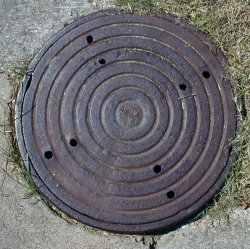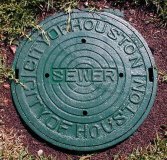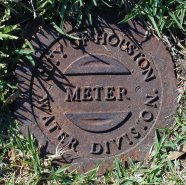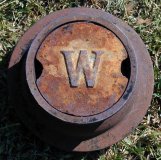Manhole Covers
Today, the secret coins of industrial America. The University of Houston's College of Engineering presents this series about the machines that make our civilization run, and the people whose ingenuity created them.
Manhole covers are the secret cousins of coins, writes Allan Sekula in his introduction to Mimi Melnick's book, Manhole Covers. For two centuries, American iron works have cast those 300-pound disks in a dazzling artistic variety -- imprinted with a different design for every utility company in every city.
People who worry about gender and language want the term "manhole cover" changed to "sewer cover." But that's a grievous misreading of their purpose. The word manhole was first used for access holes between the decks of the old, all-male, sailing ships. It had nothing to do with sewers.
Today, manholes give access to underground gas, steam, electric, water, and telephone lines -- as well as to sewers. They cover coal chutes and lead to cooling chambers for underground transformers. No doubt, the first manholes in city streets were for gas lines and sewers, but their history is lost.
None of the first manhole covers have survived. And the oldest surviving foundry catalog is from in 1860. Nineteenth-century libraries took good care of even second-rate literature. But first-rate catalogs of the arts that were shaping America seemed to lie beyond their purview.
So Melnick shows us the covers themselves -- hundreds of photos. They're festooned with a delirious gallery of designs -- Gothic tracery, Tartar shields, mazes -- patterns that swirl in leaves and spirals. Some have drainage holes; some are watertight. Some have glass plugs embedded in the steel to admit light to the cavern below.
For beneath the sunlit city above is a great criss-crossing warren of supply mains that must be attended. Any list of the Seven Wonders of the Modern World would have to include the Chicago sewer system. It's a far larger achievement than the Great Pyramid of the ancient world, or the World Trade Center today. The technical underworld that supplies our needs is vast.
 Last night, walking my dog, I turned the corner just fifty paces from my house. There was a manhole cover I'd stepped on a thousand times before and never seen. Its simple pattern of concentric circles is bland alongside other covers. If these were the coins of the new industrial age, this cover was no more than a common penny.
Last night, walking my dog, I turned the corner just fifty paces from my house. There was a manhole cover I'd stepped on a thousand times before and never seen. Its simple pattern of concentric circles is bland alongside other covers. If these were the coins of the new industrial age, this cover was no more than a common penny.
Still, that's not the reason I failed to see it. What Melnick's lovely book does is to look under the the cloak of invisibility we throw over the artisans who make a civilized people of us. It's our own true coat of arms that's cast in these fine -- and peaceful -- iron shields.
I'm John Lienhard, at the University of Houston, where we're interested in the way inventive minds work.
(Theme music)
Melnick, M., Manhole Covers (with photos by R.A. Melnick), Cambridge, MA: the MIT Press, 1994.
Artist Bobbi Mastrangelo makes wonderful use of manhole covers as art objects at: https://www.bobbimastrangelo.com/
I am grateful to Margaret Culbertson, UH Art and Architecture Librarian, for suggesting the topic and providing the Melnick source. This episode was also fed by a protracted discussion of sexist language on the internet listserv, ExLibris. ExLibris member Betty Bright pointed out the source that suggests what turns out to be an inappropriate alternative: sewer cover. It is: Maggio, R., The Dictionary of Bias-Free Usage: A Guide to Nondiscriminatory Language, Phoenix: Oryx Press, 1991.

 .
. 
A painted manhole cover, a water meter access cover, and a water main cover
-- all within steps of my house.